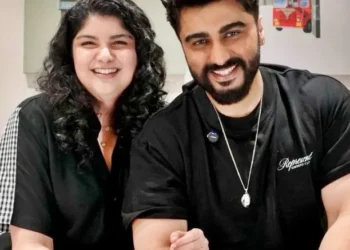KP, a 18-year old boy, gets bitten in the remote village of Gumte in Arunachal Pradesh in the evening while returning home through the jungle.
He complains of severe pain on the bitten hand which starts swelling in no time. His mother rushes him to the nearby primary health centre, where there are no health staff available.
His mother takes him to a traditional healer nearby who incises the wound with a used blade in spite of the excruciating pain the boy is in and then applies a snake stone, which the healer believes sucks the venom out of the body.
The boy slowly starts becoming unresponsive showing signs of respiratory distress and is then hurried to the community health centre at Pakke Kessang at a distance of 30 km, but reaches there unresponsive and is declared dead on arrival.
Snakebite envenoming (SBE) was added to the list of Neglected Tropical Diseases in 2017 by the World Health Organisation (WHO), which also estimates that there are 4.5-5.4 million snakebites worldwide resulting in 1.8-2.7 million envenoming, 81,000-138,000 deaths, and permanent disabilities in 400,000 annually.
International World Snakebite Awareness Day is observed on September 19 every year.
India has the dubious distinction of accounting for half the number of bites, approximately two million and 58,000 deaths annually. Over 70 per cent of SBE occurs in males, typically in the productive ages of between 20 and 60 years and therefore having a tremendous socio-economic impact especially in case of death of the sole earning member of the family.
Doctors say the reasons for the neglect are many, including general lack of awareness with regards to snakebite among healthcare workers, community, etc.; the available polyvalent anti-snake venom not having the neutralising effect against snake species of the northeast of India; victims in remote villages depending on traditional healers for treatment; and absence of a national protocol for treatment.
All these factors alongside the general apathy shown towards SBE by health policy makers, pharmaceutical industry, funding agencies and the health system in general, in spite of the considerable social ramifications is contributory.
The issues highlighted are more pronounced in the northeast as snake species here differ considerably from the rest of India and the effect of anti-snake venom against the common envenoming species like naja kaouthia (monocellate cobra) and pit viper species is doubtful.
In order to be able to prevent death and complications awareness need be created in the community about snakebite, how it could be prevented, the first-aid measures and the value of anti-snake venom as the only available treatment for envenoming.
The awareness campaign need percolate down into the community through schoolchildren, ASHA workers, etc.
Doctors need be trained on the immediate first-aid measures, signs and symptoms of envenoming, dosage of anti-snake venom and the pre-medications and complications.
In order to address this neglect and inequity, the Indian Council of Medical Research (ICMR) constituted a national task force for the study of incidence, morbidity, mortality and the socio-economic burden of snakebite in India.
The task force comprises Jaideep C. Menon, a cardiologist with the Amrita Institute of Medical Sciences in Kochi, Omesh K. Bharti, State Epidemiological Officer with Himachal Pradesh government and Santanu K. Sharma, Scientist G with Regional Medical Research Centre at Dibrugarh.
They are currently conducting a field trip for situational analysis in the four northeastern states of Arunachal Pradesh, Meghalaya, Mizoram and Tripura.






















